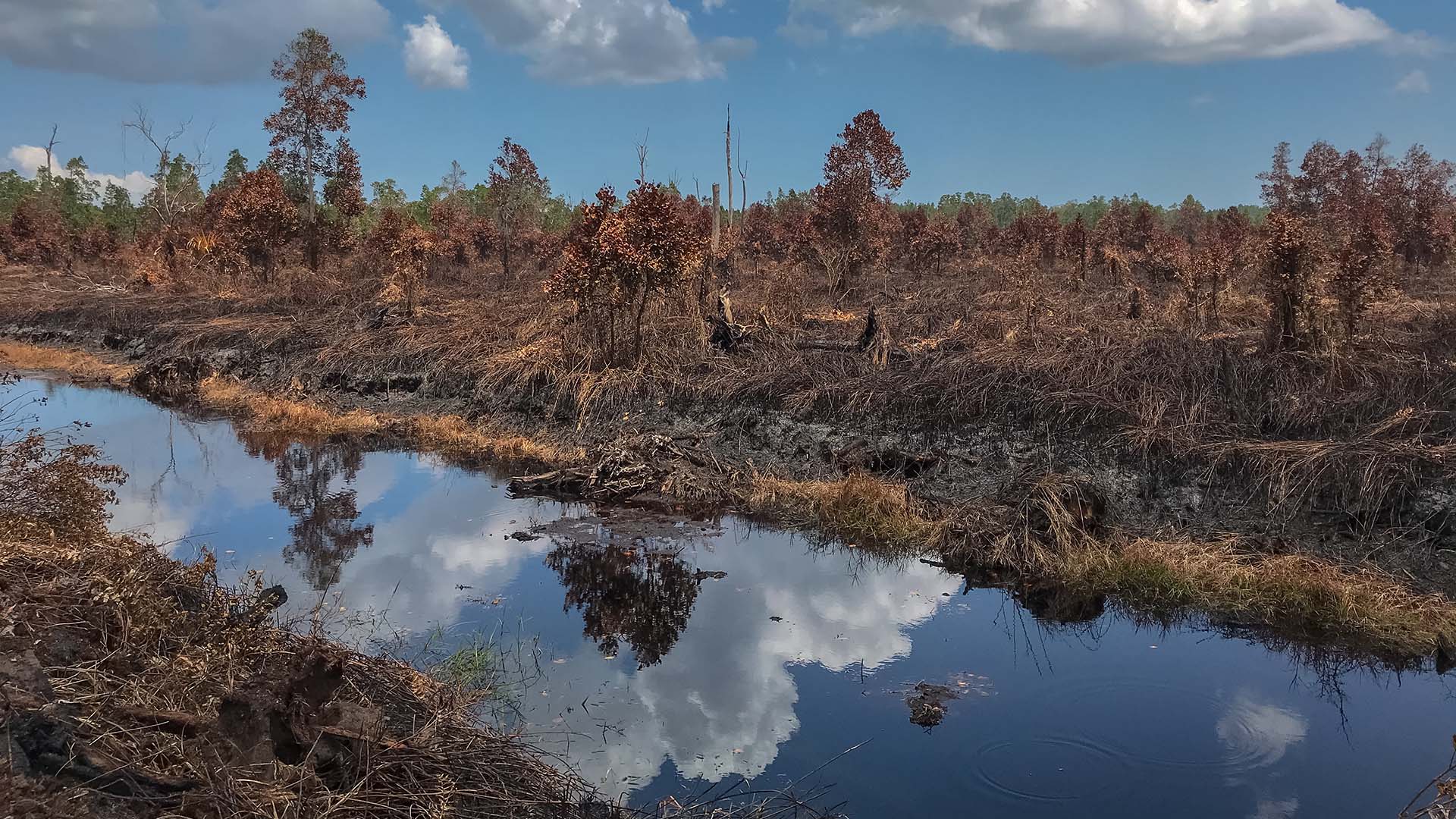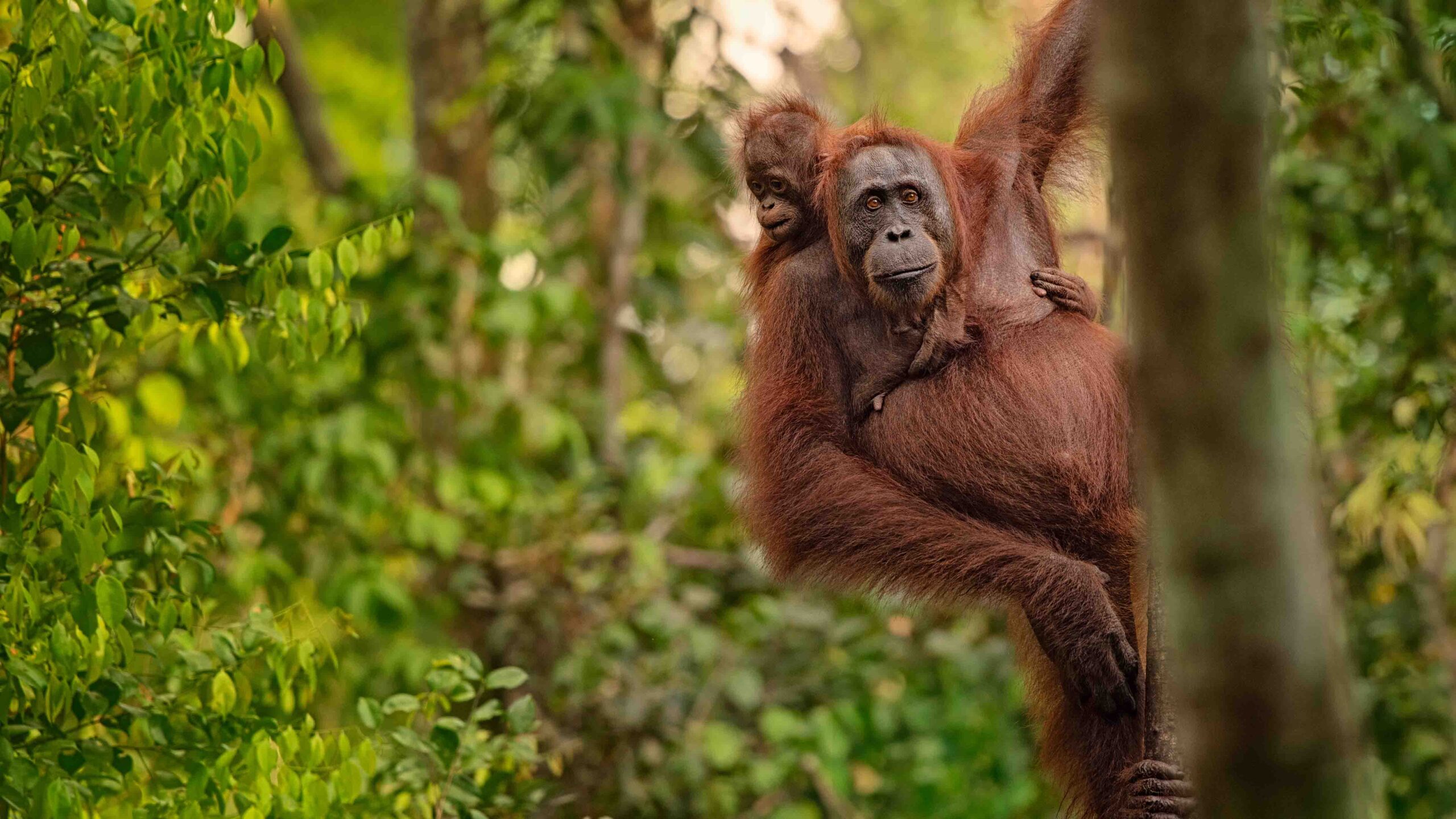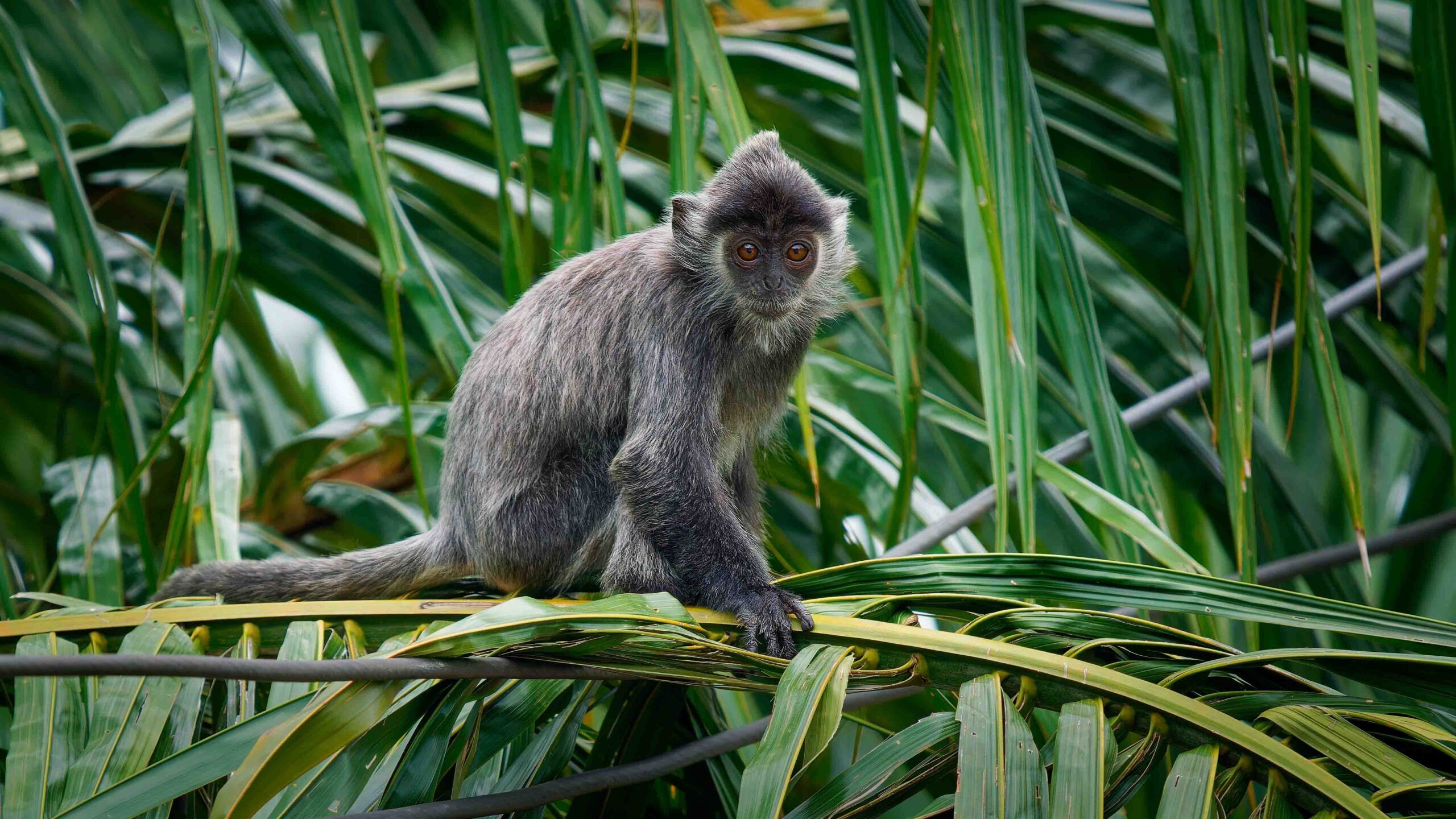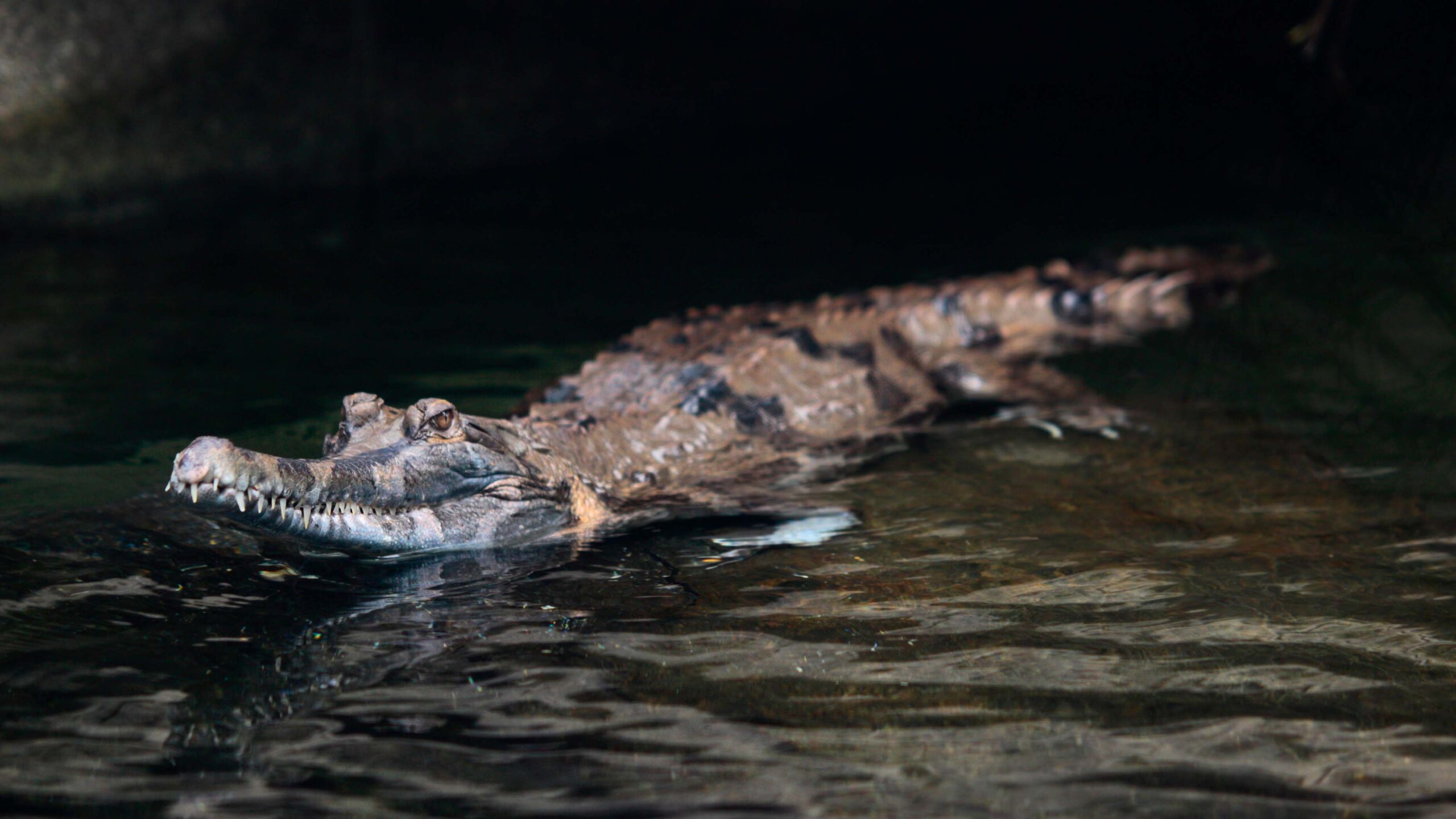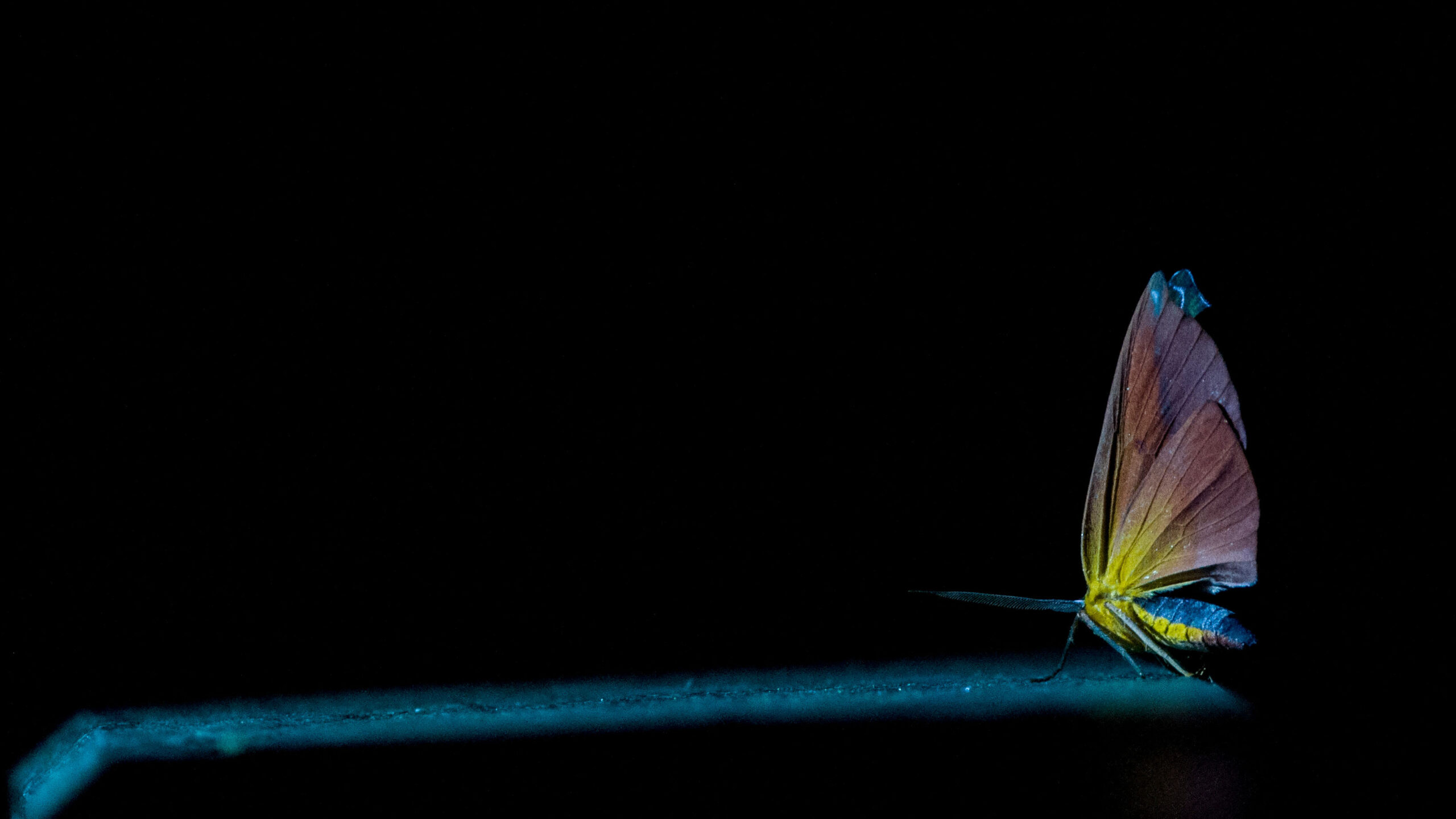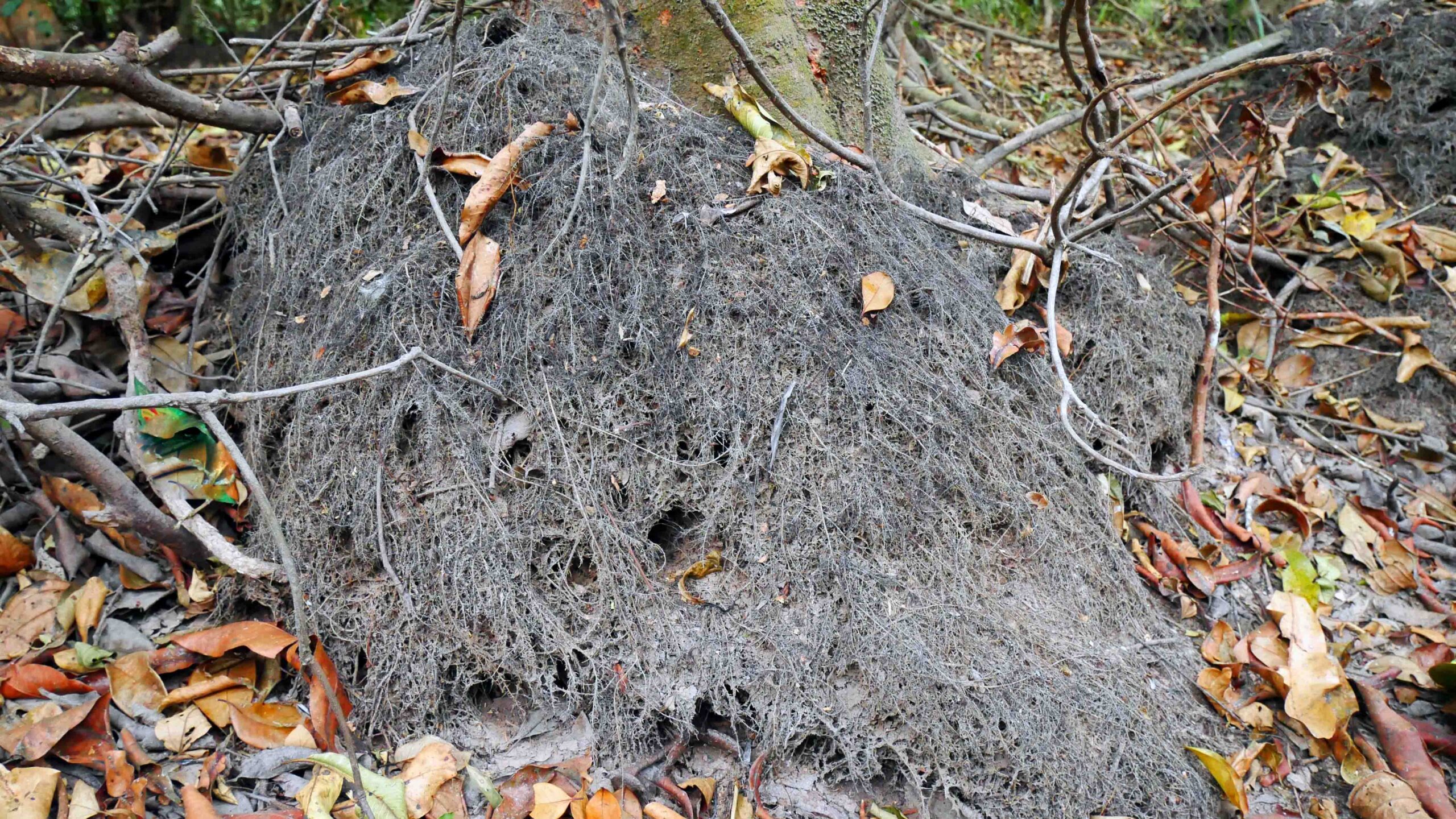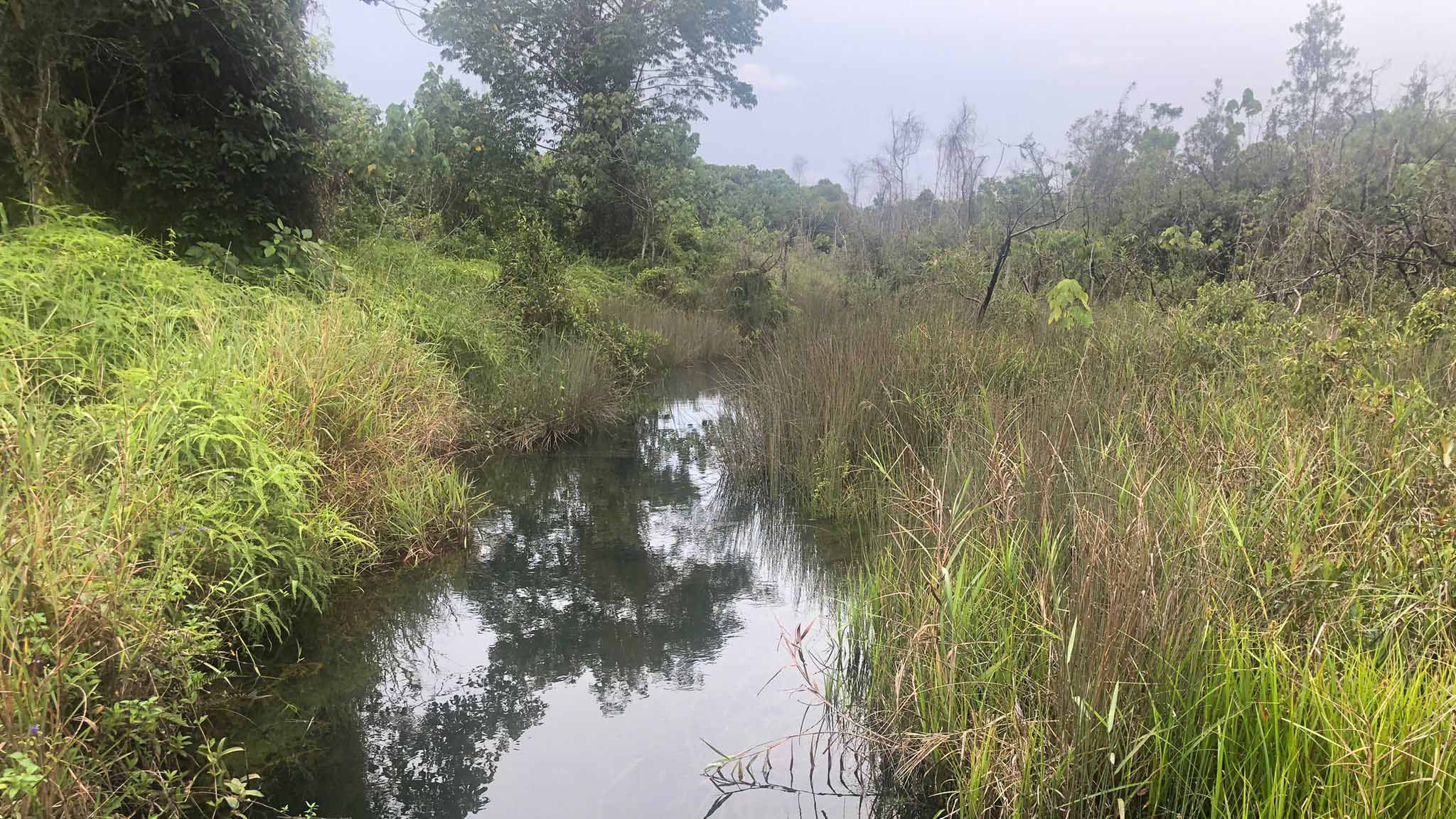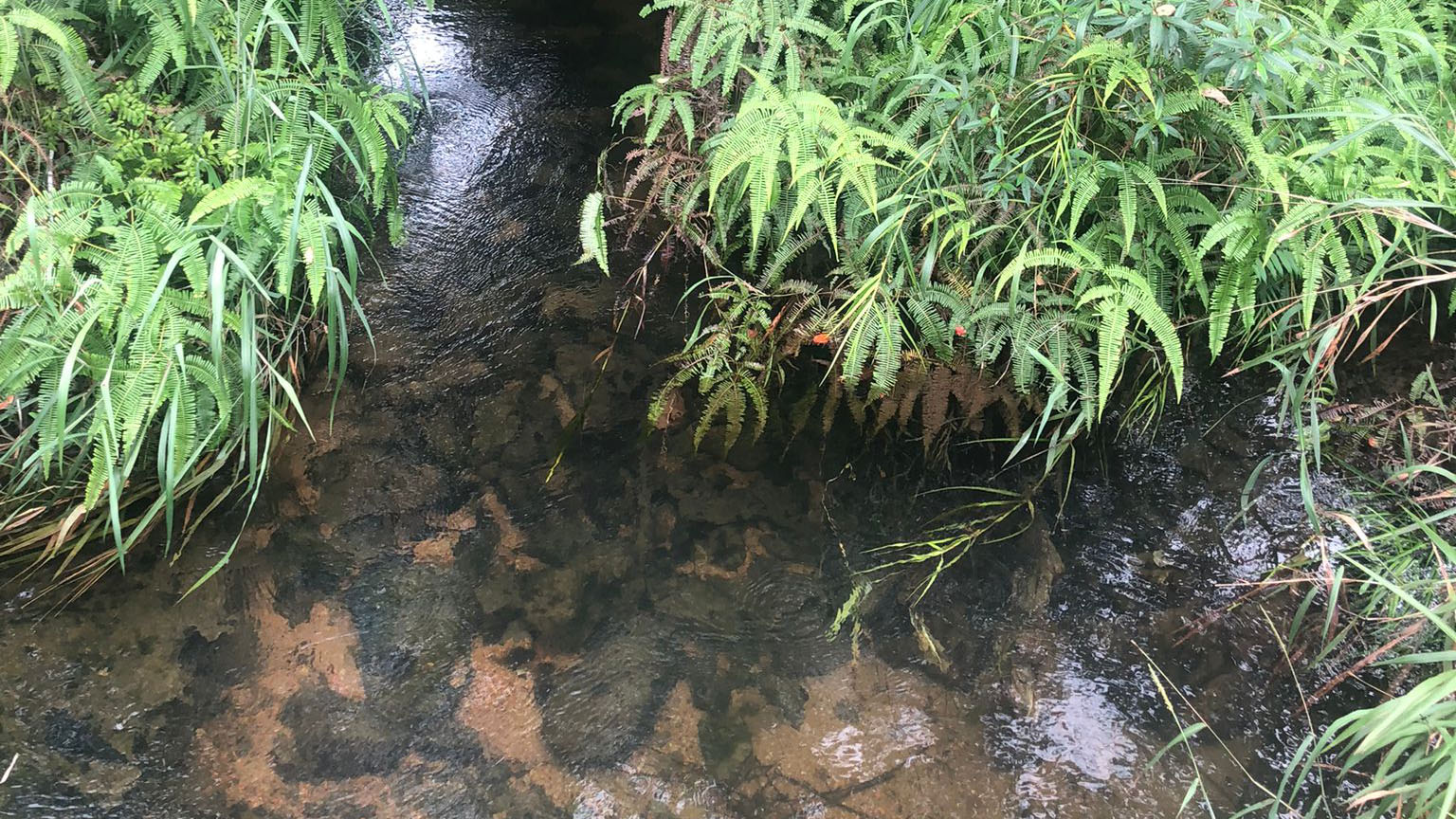Bintan gourami
Parosphromenus bintan
Bintan gourami
Parosphromenus bintan
CC goal
15 breeders
Status 05/2025
CC goal
100 animals
Status 05/2025
CC goal
15 breeders
Status 05/2025
CC goal
100 animals
Status 05/2025
The Bintan gourami is a small but highly specialized labyrinth fish that lives in the last remnants of Southeast Asia’s peat swamp forests – one of the most endangered habitats on earth. As an inhabitant of brownish, acidic jungle streams, it often remains hidden from the human public – yet it is an ideal ambassador for a fascinating but endangered ecosystem.
The brown secret of tropical streams
Parosphromenus bintan is found on the Indonesian islands of Bintan and Bangka. It lives in soft, acidic blackwater streams with a temperature of around 25 degrees Celsius. The dark brown color of the water is caused by humic substances, which are decomposed, dead biomass. The constant coverage of rainforest soil by water and the resulting lack of oxygen cause the dead plant material to turn into peat. Since humic substances absorb light, particularly in the blue and ultraviolet spectrum, the water appears reddish brown.
Clearing just one hectare of peat swamp forest releases around a thousand times more CO₂ than a flight from Paris to New York. © Thommy TFH, Shutterstock
Peatlands in danger
These peat swamp forests are of great importance for the climate, as they store the carbon contained in the dead plant remains. Although peatlands only make up around 3 per cent of the world’s land cover, they store around 30 per cent of the total carbon contained in soils. The Indo-Malaysian region has the largest share of tropical peat deposits at around 60 per cent, but such ecosystems can also be found in the Amazon region and the Congo Basin. Since the end of the 20th century, peat swamp forests in South-East Asia in particular have been destroyed at a rapid pace in order to generate profit from the tropical timber and to create palm oil plantations on the land or use it for agriculture. This not only results in the loss of habitats for a large number of species, but also the function of these areas as CO2 reservoirs and thus buffer capacities, whose loss would have a devastating impact on climate change.
Who lives in the peat forest?
Sexy eyes vs. shaggy fur
It doesn’t always take a flagship species like the Orangutan to draw attention to endangered habitats. The Bintan gourami can also fulfil this purpose. And even if it is not a shaggy ape, it has a lot to offer – with its ‘sexy eyes’ alone. When the Gouramis get into a mating mood, they put on their most seductive look. Both males and females then develop a broad, black bar that runs vertically through the eye. Males also court the females in a typical ‘head over heels’ position. Females often lose their body colouring and pattern completely during this phase and become pale beige or yellow.
Even if he is not a shaggy ape, he has a lot to offer - with his "sexy eyes" alone.
© Helene Schobuye
Bubble bath for the young ones
The genus Parosphromenus belongs to the suborder of labyrinth fish. These have a labyrinth organ with which they can also breathe in the air. However, Gouramis have largely regressed this organ and only use it to form bubbles for nest building. During the mating season, the males seek out protective, cave-like hiding places in the fallen leaves or in the dense network of roots in the bank vegetation and build a simple foam nest on the ceiling of the cave. Males try to lure females into the caves with the help of courtship dances. After mating, the female leaves the cave again and the male takes over the care of the brood. The young hatch after just 2-3 days, but remain in the nest for another week or so before swimming around freely. Presenter Hajo Schumacher tells us more about the exciting breeding behaviour of the Gourami species Parosphromenus alfredi in the german Kreaturen-Podcast.
Where does the Bintan gourami live?
Saving species on a small scale
The fascinating behaviour of the more than 20 Gourami species described can be observed particularly well in the aquarium. The fish, which are less than 6 centimetres long, do not need much space, but the right water parameters and diet are important. The care of these fish appealed to enthusiasts in Europe, America and Japan after their introduction to the aquarium hobby. However, many animals disappeared from domestic aquaria after one or two years without being able to be bred. Counteracting this trend was one of the triggers for the founding of the Parosphromenus Project. The species conservation project aims to expand and share knowledge about the genus in order to raise awareness of the endangerment of these fish. At the same time, the project is committed to protecting the natural habitats, in particular through measures to preserve the biotopes in the regions of origin. Another key focus is on the conservation and systematic expansion of stable aquarium populations in order to ensure the long-term survival of these endangered species. Knowledge of where the animals are found and transparency about their origin are essential for this. Together with the Parosphromenus Project, Citizen Conservation is committed to the conservation of the Bintan gourami.
For breeders
Basic information on biology and breeding
The species is easy to keep, as long as you pay attention to the water characteristics and the food. For extensive breeding, keep in pairs in aquaria with a volume of 20 to 30 litres (plus rearing and reserve tanks). More space required for group keeping. The water should be very soft, the pH value low (4.5-6.5) and conductivity low, too. Java moss is suitable as plant cover. Small cave hiding place for laying eggs. Structure the substrate with branches or leaves, which also release humic substances. A small filter is recommended if you have less experience. Live food such as mosquito larvae, <i>moina</i> or <i>artemia</i>.



